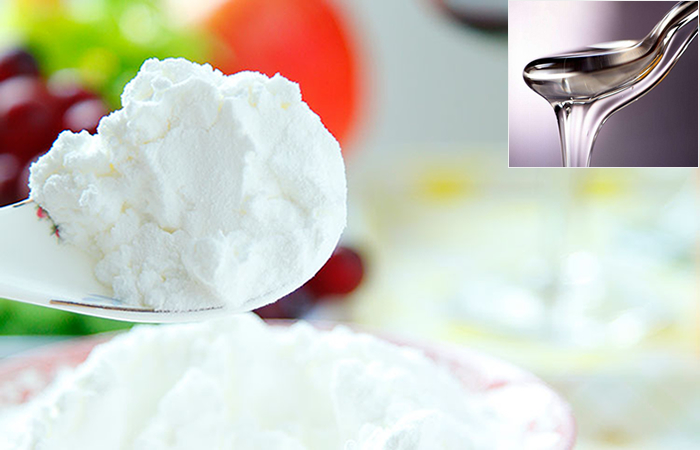Production process of glucose syrup by double enzyme method from starch
2019-01-07 / Industry newsThe double enzymatic method is a production process for hydrolyzing starch into glucose using a highly specific amylase and saccharification enzyme as a catalyst. Starch hydrolysis is carried out in two steps: in the first step, liquefaction is carried out with a high temperature resistant a-amylase; in the second step, the liquefaction liquid is further hydrolyzed to glucose with a starch saccharification enzyme to achieve a DE value of 98% or more. In summary, the production process of glucose syrup mainly includes seven steps of pulping, liquefaction, saccharification, deproteinization, decolorization, ion exchange, and concentrated evaporation. The operation of these steps will be detailed next.
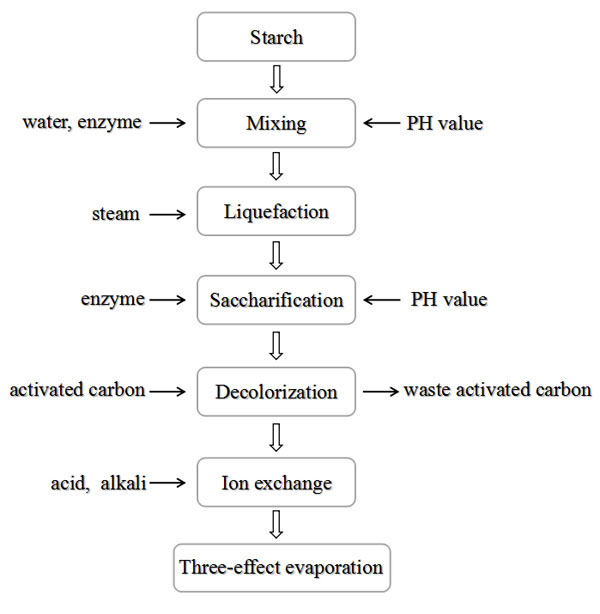 Glucose syrup production process from starch
Glucose syrup production process from starch
1. Pulping:
production process:
① Adjust the specific gravity of starch milk to 17-18.5Be with water below 42 °C, pump the adjusted starch milk into the mixing tank, and add a certain amount of 10% dilute alkali solution to the starch under constant stirring conditions, PH value of 5.5-5.8
② Add a certain amount of high temperature resistant a-amylase for liquefaction. The amount of enzyme added is determined by the DE value of the liquefied liquid, and the DE value is required to be between 13% and 17%.
2. Liquefaction:
production process:
① A certain concentration and pH of the starch milk is continuously pumped into the liquefaction tank for liquefaction.
② The liquefaction temperature of one spray is controlled at 106-110 °C, the liquefaction temperature of the second spray is controlled at 135-145 °C, the discharge speed is controlled, and the iodine color of the liquefied liquid is brownish red.
③ Note: If the liquefied liquid is unqualified, it must be reworked and reliquefied.
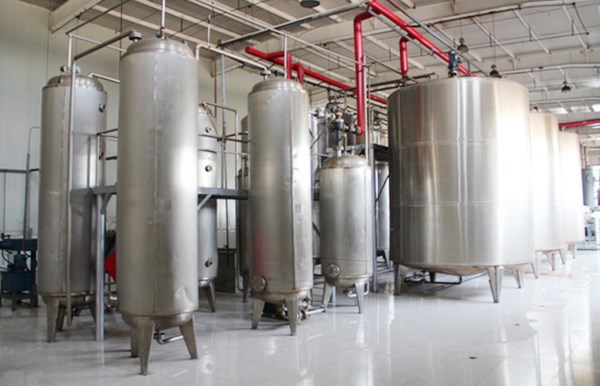 Liquefation tanks made by DOING factory
Liquefation tanks made by DOING factory
The indicators required for the enzymatic spray liquefaction process are:
Concentration: 30%-34%
рH value: 5.4~6.0 (preferably 5.5~5.8)
Enzyme amount: 0.035%~0.07% (for solids)
Injection temperature: first injection temperature: 106-110 ° C, second inject temperature: 135-145 ° C
Liquefaction retention: temperature: 95 ° C; time: 90 ~ 120 min.
The final liquefaction DE value: 14~20% (preferably between 14~16%)
Iodine test: dark red
3. Saccharification:
production process:
① After cooling the liquefied liquid, adjust the pH value and add glucoamylase
② Saccharification under certain temperature conditions for a certain time to make the DE value of 98% or more.
The indicators required for the enzymatic saccharification process are as follows:
pH: 4.1~4.5
Add enzyme amount: 100~150u/g(depending on enzyme activity plus 0.6~0.9kg/T dry starch)
Maintain temperature: 58 ° C -62 ° C
Saccharification time: 48h (normal control in 45~56h)
The final value of saccharification is DE: ≥98.5% (in most cases close to or exceed 99%)
Dextrin reaction: no white floc
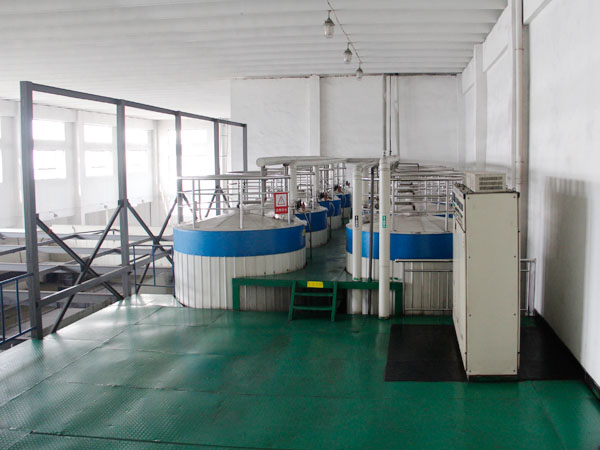 Saccharification tank
Saccharification tank
4. Protein pretreatment:
Process: After the saccharification solution is blocked by the vacuum drum filter precoated with diatomaceous earth, the plate is heated and the enzyme is heated to enter the decolorization tank.
Technical Parameters:
Sterilization temperature: 80-85 ° C
Protein content: ≤0.15%
5. Decolorization:
production process:
① After the protein pretreatment feed liquid flows into the decolorization tank, after remove enzyme then through first decolorization, second decolorization, adsorbed with activated carbon, and filtered through a plate and frame filter to obtain a clear, transparent, colorless refined sugar liquid.
② The decolorization temperature is about 80 °C, and the amount of carbon added can be determined according to the required amount of discharge color.
③ When the plate frame pressure is high and the filtration speed is slow, open the plate frame filter to remove the excess actived carbon.
Technical Parameters:
First decolorization:
Filter whiteness: ≥70%
Color point: ≤15/45ml
Decolorization time: 30 minutes
Decolorization temperature: 80-85 ° C
Second decolorization:
Filter whiteness: ≥77%
Color point: ≤10/45ml
Decolorization time: 30 minutes
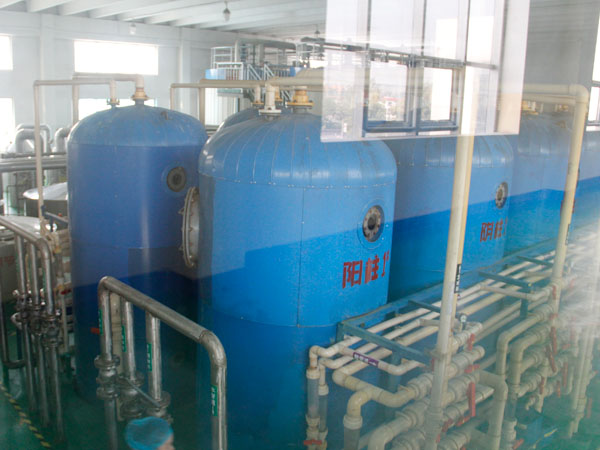 Ion exchange column
Ion exchange column
6. Ion exchange:
production process:
① Import the required sugar liquid into the ion exchanger for ion exchange
② At first into first column, cation resin exchange, then enter the second column anion resin exchange, then enter the third column for cation resin exchange, then enter the fourth column for anion resin exchange, then by adjusting the flow rate of the liquid entering the fifth column cationic resin, a sugar liquid meeting the quality standard is obtained for evaporation.
Technical Parameters:
Feed temperature: 45-50 °C
Conductivity: ≤50us/cm
Light transmittance: ≥95%
PH value: 3.5-4.5
7. Evaporation and concentration:
The ion exchanged sugar liquid is pumped into a three-effect evaporator to obtain a suitable concentration of syrup, which is the final product glucose syrup, which can then be sent to a storage tank and packaged.
Finally, please click glucose syrup production equipment to get more related information.
